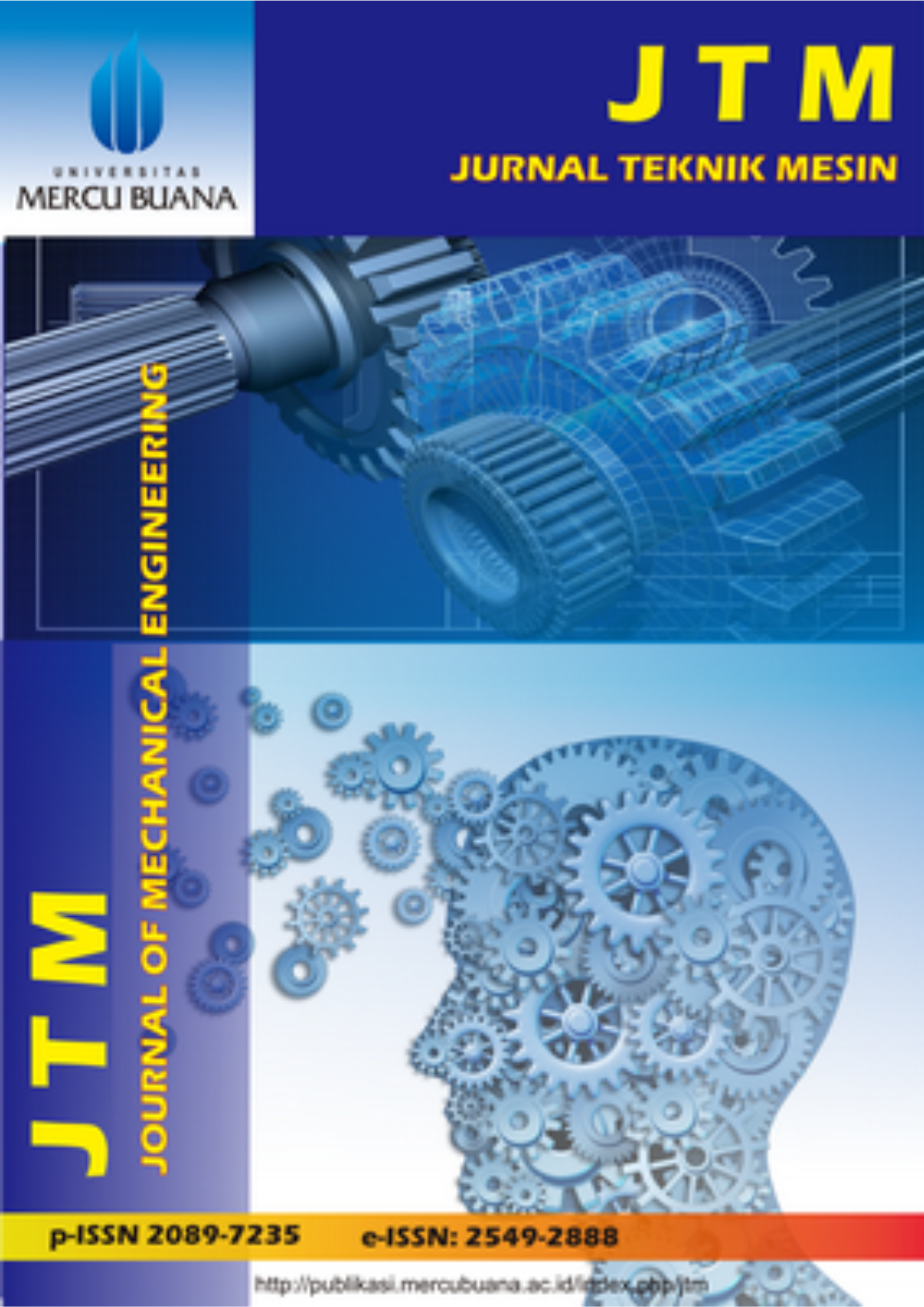Experimental Investigation of the Corrosion Rate of Factory-Original Motorcycle Exhausts in NaCl Solution and Natural Seawater
Abstract
Keywords
Full Text:
PDFReferences
Asian Development Bank, *Southeast Asia and the Economics of Global Climate Stabilization*, Asian Development Bank, 2019.
Indonesian Motorcycle Industry Association (AISI), *Annual Motorcycle Sales Data*, AISI, 2024.
Badan Pusat Statistik, *Statistik sumber daya laut dan pesisir 2020*, BPS, 2020.
S. N. Amru, S. Jokosisworo, and U. Budiarto, “Analisis pengaruh luasan coating scratch dan kadar salinitas terhadap laju korosi pada baja A36,” *Jurnal Teknik Perkapalan*, vol. 11, no. 3, 2023. [Online]. Available: https://ejournal3.undip.ac.id/index.php/naval/article/view/40597
H. Susanto, J. Supardi, M. Ridha, S. Huzni, and S. Fonna, “Laju korosi atmosferik kawasan pesisir dan rural di Kabupaten Aceh Barat pasca tsunami 2004,” *Jurnal Mekanova*, vol. 3, no. 2, pp. 65–69, 2021. [Online]. Available: https://jurnal.utu.ac.id/jmekanova/article/view/834
Y. Chen, W. Li, H. Zhang, and J. Xu, “Atmospheric corrosion behavior of low carbon steel in marine environment: Field exposure and mechanism analysis,” *Corrosion Science*, vol. 218, p. 111228, 2023. doi: 10.1016/j.corsci.2023.111228.
C. Zhou, X. Zhang, Y. Liu, and D. Wang, “A review on corrosion behavior and protective strategies of carbon steels in marine environment,” *Corrosion Reviews*, vol. 41, no. 2, pp. 121–140, 2023. doi: 10.1515/corrrev-2023-0008.
L. Liu et al., “Research on atmospheric corrosion of 45# steel in low-latitude coastal areas of China,” *Metals*, vol. 14, no. 6, p. 674, 2024. doi: 10.3390/met14060674.
Y. M. Pusparizkita et al., “Understanding of low-carbon steel marine corrosion through simulation in artificial seawater,” *AIMS Materials Science*, vol. 10, no. 3, pp. 499–516, 2023. doi: 10.3934/matersci.2023028.
M. S. Ahmed et al., “Corrosion of carbon steel in a tropical marine environment enhanced by H₂S from sargassum seaweed decomposition,” *Metals*, vol. 14, no. 6, p. 676, 2024. doi: 10.3390/met14060676.
J. Alcantara et al., “Marine atmospheric corrosion of carbon steel: A review,” *Materials*, vol. 10, no. 4, p. 406, 2017. doi: 10.3390/ma10040406.
A. C. Santa et al., “Atmospheric corrosion of carbon steel: Results of one year exposure in an Andean tropical atmosphere in Colombia,” *Heliyon*, vol. 10, no. 8, p. e29391, 2024. doi: 10.1016/j.heliyon.2024.e29391.
S. O. Alharbi et al., “The corrosion behavior of low carbon steel (AISI 1010) influenced by grain size through microstructural mechanical,” *Scientific Reports*, vol. 14, p. 5098, 2024. doi: 10.1038/s41598-023-47744-y.
N. A. A. Razak and S. S. Ng, “Investigation of effects of MIG welding on corrosion behaviour of AISI 1010 carbon steel,” *J. Mech. Eng. Sci.*, vol. 18, no. 1, pp. 103–114, 2024. doi: 10.24191/jmes.v18i1.23500.
J. Kubisztal et al., “Temperature related corrosion resistance of AISI 1010 carbon steel in sulfolane,” *Materials*, vol. 13, no. 11, p. 2563, 2023. doi: 10.3390/ma13112563.
R. R. Moreira et al., “Electrochemical investigation of corrosion on AISI 316 stainless steel and AISI 1010 carbon steel: Study of the behaviour of imidazole and benzimidazole as corrosion inhibitors,” *Scientific Reports*, 2023. doi: 10.1038/s41598-023-37123-w.
G. Cocco, *Motorcycle Design and Technology*, Giorgio Nada Editore, 2004.
ASTM International, *ASTM G31-21: Standard guide for laboratory immersion corrosion testing of metals*, ASTM International, 2021. [Online]. Available: https://www.astm.org/g0031-21.html
DOI: http://dx.doi.org/10.22441/jtm.v14i3.36552
Refbacks
- There are currently no refbacks.
Copyright (c) 2025 Jurnal Teknik Mesin (Journal Of Mechanical Engineering)
Jurnal Teknik Mesin (JTM)
Program Studi Teknik Mesin, Fakultas Teknik, Universitas Mercu Buana
Jl. Meruya Selatan No. 01, Kembangan, Jakarta Barat 11650, Indonesia
Email: [email protected]
Telp.: 021-5840815/ 021-5840816 (Hunting)
Fax.: 021-5871335
JTM is indexed by the following abstracting and indexing services:

This work is licensed under a Creative Commons Attribution-NonCommercial 4.0 International License.






.png)







_(486_x_90_px)_(486_x_190_px)_(486_x_190_px)_(4).png)
_(486_x_90_px)_(486_x_190_px)_(486_x_190_px)_(5).png)
2.png)
.png)